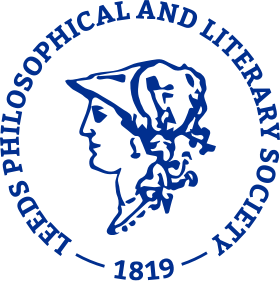Our History
1819 - A New Society
Following letters in the newspapers criticising Leeds for a shameful lack of culture, a public meeting, chaired by eminent Leeds surgeon William Hey, resolved to form a new society to discuss ‘all the Branches of Natural Knowledge and Literature.’ Leeds residents holding a range of religious, economic and political opinions were to be encouraged to address practical and intellectual topics without being confrontational.
Many of the more educated and forward-thinking Leeds residents subscribed – merchants, industrialists, bankers, doctors, religious leaders, artists. Eighty members bought £100 shares to provide a building for the Society’s activities. That’s around £11,000 each at 2020 values.
Did you know? When the Society was founded in the early 19th century, ‘natural philosophy’ was the term used for reasoning and explanations about nature – what we now call ‘science’.
 William Hey FRS, (1736-1819) Surgeon, twice Mayor of Leeds, friend of Joseph Priestley.
William Hey FRS, (1736-1819) Surgeon, twice Mayor of Leeds, friend of Joseph Priestley.
1821 - Philosophical Hall Opens
The Society’s ‘Philosophical Hall’, designed by London-trained architect Robert Chantrell, was opened in 1821. The Secretary, Dr Charles Turner Thackrah, gave the opening address, and other distinguished speakers came to lecture here.
Among the first were:
William Smith – maker of the first geological map of Britain
Charles Waterton – naturalist, explorer, and pioneering conservationist
John Dalton FRS from Manchester – chemist, physicist, proposer of atomic theory, carried out the first research on colour blindness
The Society’s Proceedings were printed and widely circulated. Philosophical Hall, with its lecture hall, museum, library and laboratory, was one of the first such buildings in Britain.
 Philosophical Hall, fronting Bond Street, on the corner with Park Row, 1821
Philosophical Hall, fronting Bond Street, on the corner with Park Row, 1821
1828 - The Leeds Mummy
Among many early gifts and purchases for the Society’s museum were two rare Egyptian mummies. A specially invited group of members witnessed the opening of the finest case. The mummy was carefully unwrapped and the body and its wrappings scientifically analysed. All the details were recorded and published, with an interpretation of the hieroglyphs. This was exemplary research work for its time, showing the Society leading the field in this new branch of study.
 Case of the mummy of Egyptian priest Nesyamun, drawn by curator Henry Denny in 1828. Also known as the 'Leeds Mummy', it dates from around 1100BC. It is on display at Leeds City Museum
Case of the mummy of Egyptian priest Nesyamun, drawn by curator Henry Denny in 1828. Also known as the 'Leeds Mummy', it dates from around 1100BC. It is on display at Leeds City Museum
1838 - A Growing Museum
Space for the museum had to be expanded as donations flooded in from members’ travels and collections: in geology, mineralogy, ancient history, distant cultures. The first professional curator, Henry Denny, was particularly active in natural history, buying exotic animal bodies from menageries, collecting native species, and begging rare specimens from explorers like Charles Darwin and David Livingstone. Over the years the museum became recognised as the leading provincial museum of its day. Curator Henry Denny (1803-1871), the first paid member of the museum staff, was in his post for 45 years.
 Display of rare skeletons: the body of the elephant had been bought from Wombwell’s menagerie when it came to Leeds.
Display of rare skeletons: the body of the elephant had been bought from Wombwell’s menagerie when it came to Leeds.
1842 - Not Just For Men
All the early members of the Society were men, but women were not formally excluded and in 1842 a change in the rules referred to ‘ladies or gentlemen’ in the new category of annual subscribers. Women began to appear on the membership lists, one of the first being Ellen Heaton, collector of art, sister of Dr John Deakin Heaton (a leading physician and a President of the Society 1868-1872).
It wasn’t until the 1990s that a woman was elected as President of the Society. Jean Mortimer, a historian, was in the role 1993-95.
 Ellen Heaton (1816-1894) one of several early women members of the Society.
Ellen Heaton (1816-1894) one of several early women members of the Society.
1849 - Drawing in the Crowds
The Society held its first evening ‘conversazione’ this year. It became a popular annual event for what the press called ‘the fashionable élite’. The museum was opened up and illuminated, and members had an opportunity to dress up, bring their families, enjoy music and refreshments, watch scientific demonstrations, and share interesting items from their personal collections – a kind of Victorian ‘show and tell’.
Did you know? The Society has an annual science fair in March, held in the great circular room in today’s museum. It’s very popular with young visitors.
 Electric telegraph equipment sent from London for demonstration at the 1846 conversazione
Electric telegraph equipment sent from London for demonstration at the 1846 conversazione
1851 - The Armley Hippo
Bones found at in brick field in Armley were collected by curator Henry Denny, examined, and identified as the bones of the Great Northern Hippopotamus from pre-historic times. Elephant and cattle bones were also found. Modern research has confirmed his identification and dated them to 124,000 years ago.
The bones went into the museum collection, attracting crowds of visitors intrigued by the local find of such ancient remains.
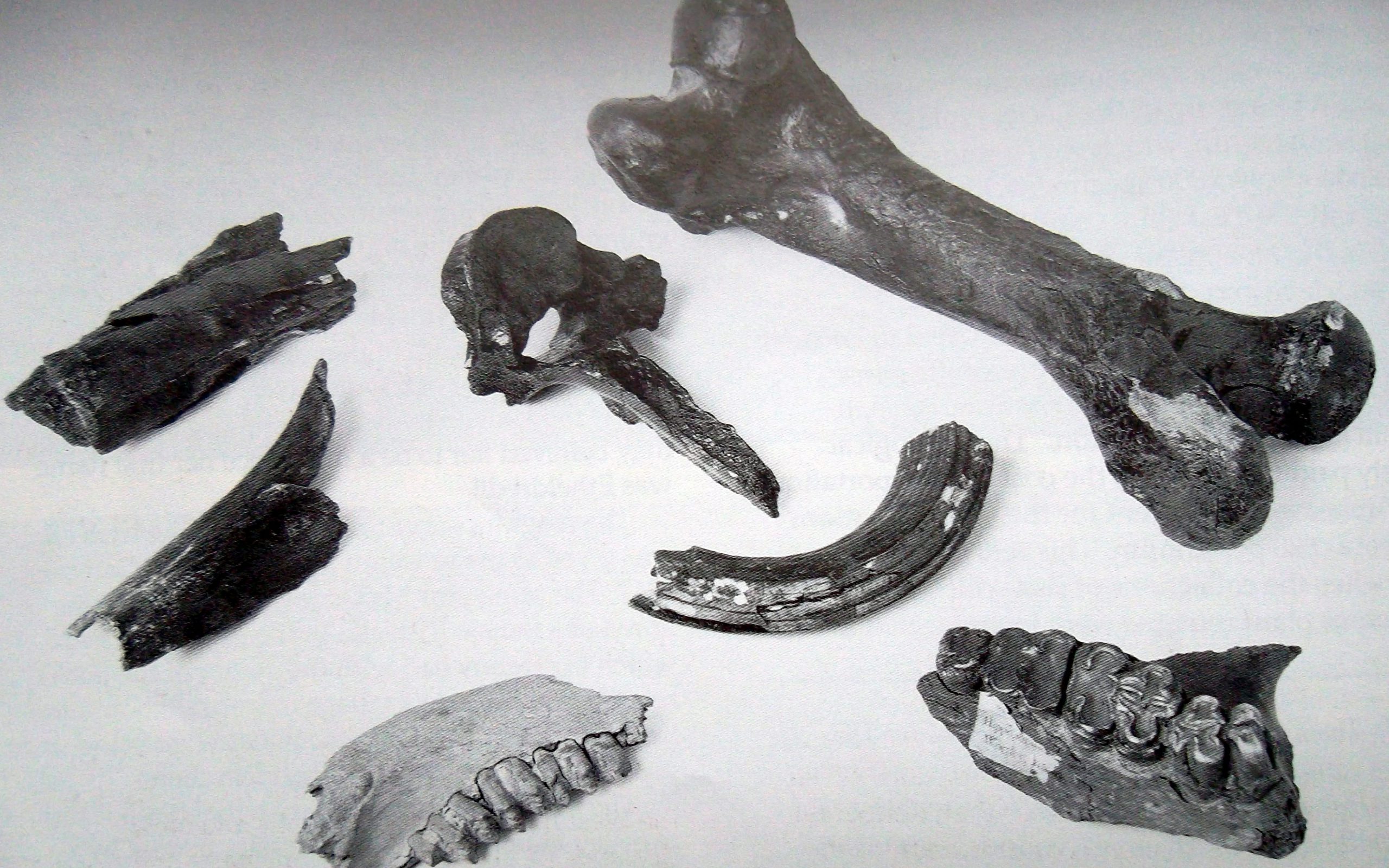 Bones found in Armley in 1851, identified as hippopotamus and elephant bones.
Bones found in Armley in 1851, identified as hippopotamus and elephant bones.
1852 - Opening Doors - and a possible partnership
Admission to the museum, previously only through a member, was opened to the public at a charge of one penny, attracting over 8,000 visitors this year.
Free lectures on science for young people were offered in the Christmas vacation and became a long-running popular annual feature.
Union with the Leeds Library was discussed and a plan drawn up, but never implemented. However members helped to establish several other learned societies, such as the Astronomical Society.
Did you know? Before British currency went decimal (1971), there were 240 pennies in a pound.
100 years before the change occurred, the Society hosted a lecture on the possibility of decimal coinage.
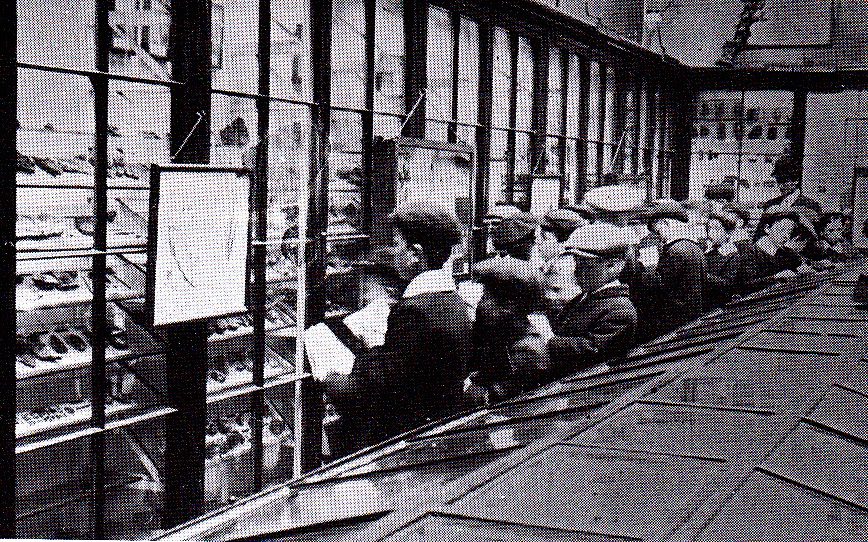 Lectures and study visits brought many schoolchildren to the museum over the years.
Lectures and study visits brought many schoolchildren to the museum over the years.
1862 - A Grander Hall
The 1821 Philosophical Hall had become too small for the Society’s expanding museum and other activities, so it was decided to invest in rebuilding. The work by architects Dobson and Chorley (whose offices were nearby in Park Row) doubled the hall’s size and added a new lecture hall, zoology gallery, library and kitchens. The frontages were remodelled in fashionable Italianate style, with a new colonnaded porch in Park Row which became a distinctive landmark. Lectures and an impressive art exhibition open to the public marked the opening.
 ‘Park Row, 1882’ by Leeds artist John Atkinson Grimshaw (1836-1893). The new portico of Philosophical Hall is on the left – the west side of the street. ©Leeds Art Gallery
‘Park Row, 1882’ by Leeds artist John Atkinson Grimshaw (1836-1893). The new portico of Philosophical Hall is on the left – the west side of the street. ©Leeds Art Gallery
1874 - The Yorkshire College
The Yorkshire College of Science, origin of the University of Leeds, was founded this year, a project which many members of the Society had supported. The bonds between the Society and the University carried on: many lecturers and professors have been members of the Phil & Lit over the years and have contributed lectures – all open to the public.
Did you know? When the Yorkshire College of Science opened in 1874, there were just 3 professors and 24 students.
2020 figures: 39,000 students (including part-time) and over 9,000 staff.
 The Yorkshire College opened in buildings in Cookridge Street, but moved to new purpose-built premises in the 1880s.
The Yorkshire College opened in buildings in Cookridge Street, but moved to new purpose-built premises in the 1880s.
1883 - Famous Names
Every year the Society attracted to Leeds a range of eminent speakers across science and the arts. In 1883 members heard lectures from four visiting Fellows of the Royal Society on subjects ranging across botany, astronomy, marine biology and zoology. There were speakers on education, poetry, art and history. Artist and social reformer William Morris spoke on Art and Labour.
Some other famous names from the lecture lists of the 19th century:
- Joseph Paxton, designer of the Crystal Palace for 1851 Great Exhibition in London, spoke during the 1855-56 season
- George Gilbert Scott was a guest speaker in the 1862-63 season, the year when work was beginning on new buildings for Leeds General Infirmary, designed by this national architect
- In the 1870-71 season there were lectures by scientist Thomas Huxley and novelist Anthony Trollope
 William Morris (1834-1896) one of the many national figures invited to speak to the Society.
William Morris (1834-1896) one of the many national figures invited to speak to the Society.
1891 - The Phil & Lit Hall on the tourist trail
This is an excerpt from a guide book published in 1891. The Philosophical Hall, Park Row, was very much in the heart of the town.

1909 - William Bragg, Nobel Laureate
Physicist William Henry Bragg, Cavendish Professor of Physics at the University, was a member of the Society and this year gave a landmark lecture on ‘Radioactivity, the new Science’. He went on to win the Nobel prize in 1915 for his ground-breaking work in Leeds, carried out with his son Lawrence.
In 2013 the Society sponsored activities to celebrate the centenary of the breakthrough in his research.
Did you know? Broadcaster and author Lord Melvyn Bragg, who served as University of Leeds Chancellor 1999-2017, is related to the physicists who won the Nobel Prize.
 William Henry Bragg (1862-1942) winner of the 1915 Nobel Prize for Physics with his son William Lawrence.
William Henry Bragg (1862-1942) winner of the 1915 Nobel Prize for Physics with his son William Lawrence.
1914 - WW1
Several officers and members of the Society served in the army, including its long-term Secretary, Edwin Kitson-Clark. Members at home organised special lectures, receptions and teas for the many wounded soldiers in hospitals here. The basement of Philosophical Hall was given over to volunteers knitting garments and providing supplies for the West Yorkshire Regiment.
 Lt. Col. Edwin Kitson-Clark,FSA, MICE, Hon. Secretary, author of the history of the first 100 years of the Society, published 1924.
Lt. Col. Edwin Kitson-Clark,FSA, MICE, Hon. Secretary, author of the history of the first 100 years of the Society, published 1924.
1921 - The Centenary - and Goodbye to the Museum
After long negotiations with the University and the City Council, the Society transferred Philosophical Hall and the entire museum collection to the Council, on terms which gave the Society a strong role in the museum’s governance and provided financial support for the Society for the next 25 years. The Society became a charitable limited company, dedicated to the advancement of science, literature and art in Leeds.
A history of the Society’s first 100 years was compiled by Edwin Kitson Clark (published 1924).
 Philosophical Hall in 1921
Philosophical Hall in 1921
1936 - The Library Goes To A New Home
Over more than a century the Society had collected a library of around 4,500 books, mainly on scientific subjects, some rare. When the Brotherton Library was opened in 1936, vastly increasing the University Library’s capacity, the Society donated its collection to be housed there. Today the Society’s archives are also held at the University in the Special Collections, where they were re-ordered and catalogued in 2017.
 Edward Allen Brotherton, 1st Baron Brotherton (1856 -1930) developed a highly successful chemicals business from 1878. Always generous, he gave several major donations to the University of Leeds, including £100,000 to build a library. Amongst the collections in ‘the Brotherton’ are his own valuable archive of books and manuscripts.
Edward Allen Brotherton, 1st Baron Brotherton (1856 -1930) developed a highly successful chemicals business from 1878. Always generous, he gave several major donations to the University of Leeds, including £100,000 to build a library. Amongst the collections in ‘the Brotherton’ are his own valuable archive of books and manuscripts.
1941 - WW2 bombing - the Hall is Hit
Philosophical Hall was still used as the City Museum and for lectures, as an earlier Council plan to build a brand new museum had collapsed. In 1941 the building was bombed in an air raid, and severely damaged. It was patched up with a concrete façade, and popular lunchtime lectures and concerts for workers and servicemen were held there throughout WW2. In 1965/66 the museum was finally moved and the Hall was demolished. A Blue Plaque marks the spot on the bank which replaced it (HSBC).
 The museum was struck by a bomb on 15 March 1941; many exhibits were damaged but many others including the mummy and the tiger survived.
The museum was struck by a bomb on 15 March 1941; many exhibits were damaged but many others including the mummy and the tiger survived.
1946 - Reviewing the Future
In this year the agreement entered into in 1921 with the City Council ended and the Society had to review its future. There was thought to be a continuing demand for lectures and activities across the sciences and the arts. It was also considered worthwhile to continue publishing the Society’s Proceedings, which had been produced since its foundation, and also to bring out publications with wider appeal. The Society continues to consider how its role can adapt to make it as relevant as possible to today while drawing on its deep heritage.
 Early publications of the Society’s Proceedings, which reached a wide audience, including abroad.
Early publications of the Society’s Proceedings, which reached a wide audience, including abroad.
1960 to 1980 - Academic Publications
In this period the Society focused on its publications, with one stream covering scientific matters and the other literary, each with its own editor. In the days before the rise of specialist journals, many of these papers were considered valuable first-line reference works – and some articles still feature as classic landmark works, notably a number of publications by E. C. Stoner, Professor of Theoretical Physics at the University of Leeds.
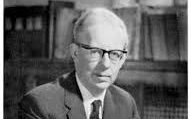 Edmund Clifton Stoner FRS (1899-1968), Professor of Theoretical Physics at Leeds 1939-63.
Edmund Clifton Stoner FRS (1899-1968), Professor of Theoretical Physics at Leeds 1939-63.
1980 to 2000 - A New Direction
From the 1980s, the Society took on a more prominent role in the city. It advertised its grants more widely and put extra effort into its programme of public lectures, outings and dinners. It also played an important part when the British Association for the Advancement of Science met in Leeds in 1997.
In 1997 the 1921 constitution was revised and updated.
Did you know? The Society has always featured and supported arts as well as sciences. Since the early 21st century, the majority of its grants have been awarded for cultural projects in performing arts – theatre and a wide range of musical performances.
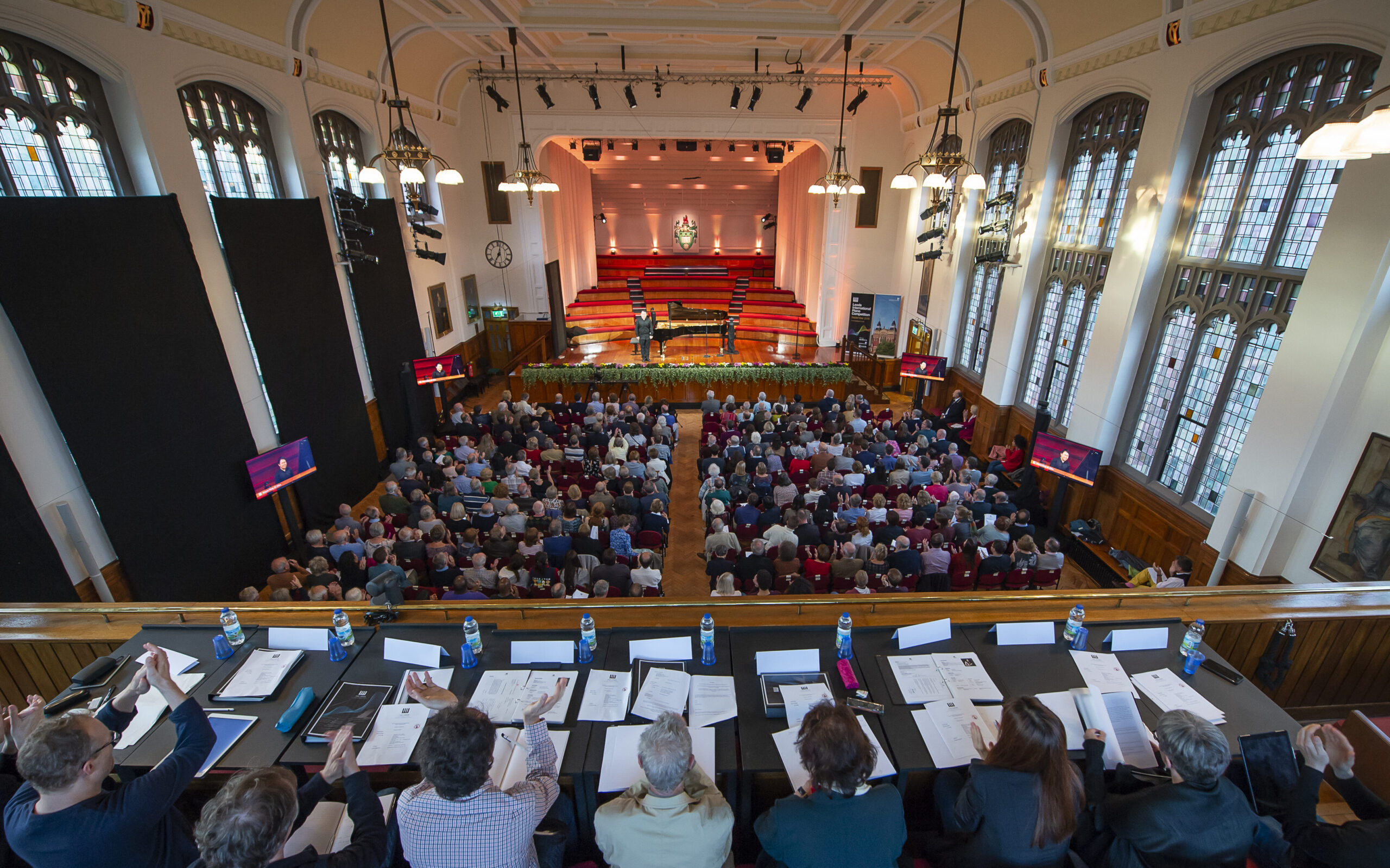 Leeds International Piano Competition takes place every three years. Here the semi-finals of the 2018 competion were in progress in The Great Hall, University of Leeds. Chinese pianist Xinyuan Wang (born 1995) was about to perform. He went on to win third prize. Picture by Allan McKenzie.
Leeds International Piano Competition takes place every three years. Here the semi-finals of the 2018 competion were in progress in The Great Hall, University of Leeds. Chinese pianist Xinyuan Wang (born 1995) was about to perform. He went on to win third prize. Picture by Allan McKenzie.
2001 - The New Museum
From 1969 the museum was housed in the Central Library building, where space was very limited. Alongside three other local societies, the Society played a major role in preparing a successful bid for a National Lottery grant for a new museum in Millennium Square – and subsequently in discussions of plans for the displays. The new City Museum opened in 2008.
Did you know? The current museum is in a building designed for education in the 1860s: The Mechanics’ Institute. The Society published an award-winning book on the architect, Cuthbert Brodrick, who also designed Leeds Town Hall and the Corn Exchange.
 The new City Museum, opened 2008.
The new City Museum, opened 2008.
2002 to 2017 - New Initiatives
New initiatives have included a popular annual Science Fair, involving local scientific and conservation societies.
Publications include:
- a booklet on the Leeds Mummy, containing the first complete translation of the hieroglyphs
- a new appraisal of Darwin’s work on the Galapagos Finches, to mark the 150th anniversary of The Origin of Species
- From Dark Satanic Mills to DNA: how Science in Leeds Changed the World
- A study of 17th-century Leeds astronomer William Gascoigne
The Society has also sponsored activities to celebrate the work of W H Bragg and the artist John Atkinson Grimshaw.
 The popular annual Science Fair held at the City Museum.
The popular annual Science Fair held at the City Museum.
2019 - The Bicentenary
Events were held to celebrate the Society’s long and continuing role in the cultural life of the city.
 Sir Alan Langlands, Vice Chancellor (2013-2020) with Dame Jane Francis, Chancellor of Leeds University, attending the Society's Bicentenary dinner celebration. To mark the occasion, Sir Alan presented a gift: a print of a 1915 drawing by Charles Ginner of the original building of the University of Leeds, illustrated on the front cover of the Society's Annual Report for 2019.
Sir Alan Langlands, Vice Chancellor (2013-2020) with Dame Jane Francis, Chancellor of Leeds University, attending the Society's Bicentenary dinner celebration. To mark the occasion, Sir Alan presented a gift: a print of a 1915 drawing by Charles Ginner of the original building of the University of Leeds, illustrated on the front cover of the Society's Annual Report for 2019.
2020 - The Third Century
The Society held its first online lectures during the COVID-19 pandemic, including the annual Priestley lecture – the story of Edward Jenner and the smallpox vaccine, given by Gareth Williams. The book can be ordered here.
Many ideas are being developed to reach a wider audience – within and beyond Leeds.
Did you know? If you have an appetite for knowledge and ideas you can attend our public events. You can join the Society and also perhaps help to shape its agenda and activities in its third century. You’d be very welcome.

2021 - Centenary Certificate
In 1921 the Society was registered at Companies House. A certificate has been issued to us to mark the centenary.

2024 - Events for this year
In 2024 there are events relating to the tercentenary of the birth of engineer John Smeaton (7 June), the Yorkshire visit of writer Daniel Defoe (16 April) and Joseph Aspdin’s patent for Portland Cement (21 October).

Explore more

Grants
The Society makes grants both to individuals and to organisations in support of cultural and scientific activities which increase innovation, outreach and diversity in Leeds and its immediate area. It also supports local museums and galleries and publications relating to the city.
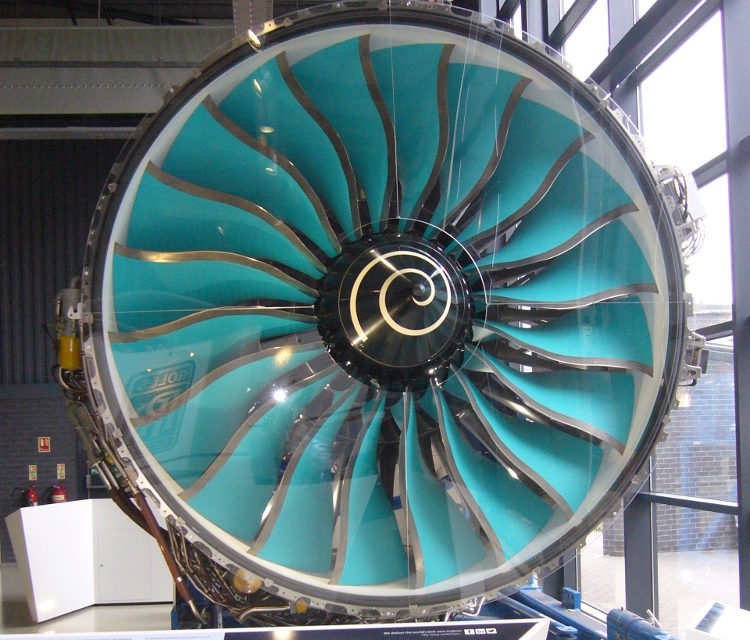
Events
Since 1819, the Phil & Lit has been inviting the people of Leeds to hear from knowledgeable and entertaining speakers. Many are leaders in their field of science, arts or current affairs. We also hold an annual Science Fair and organise occasional visits.
